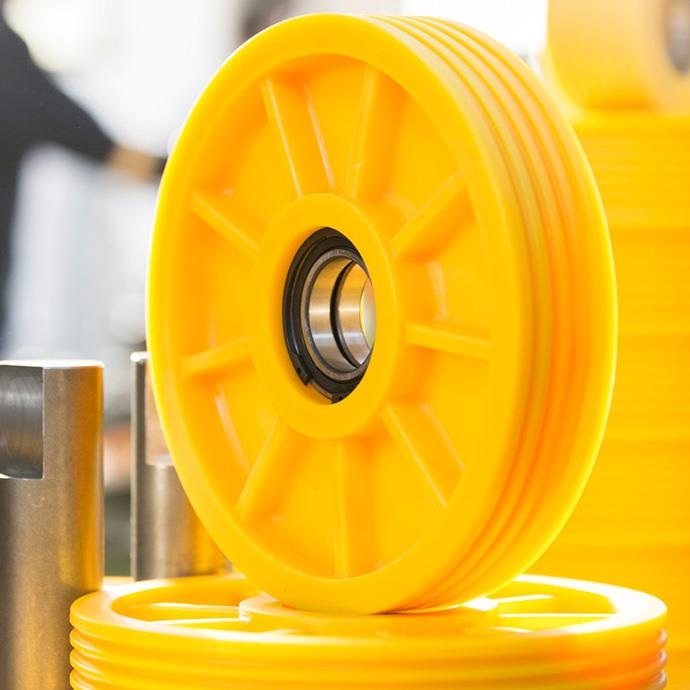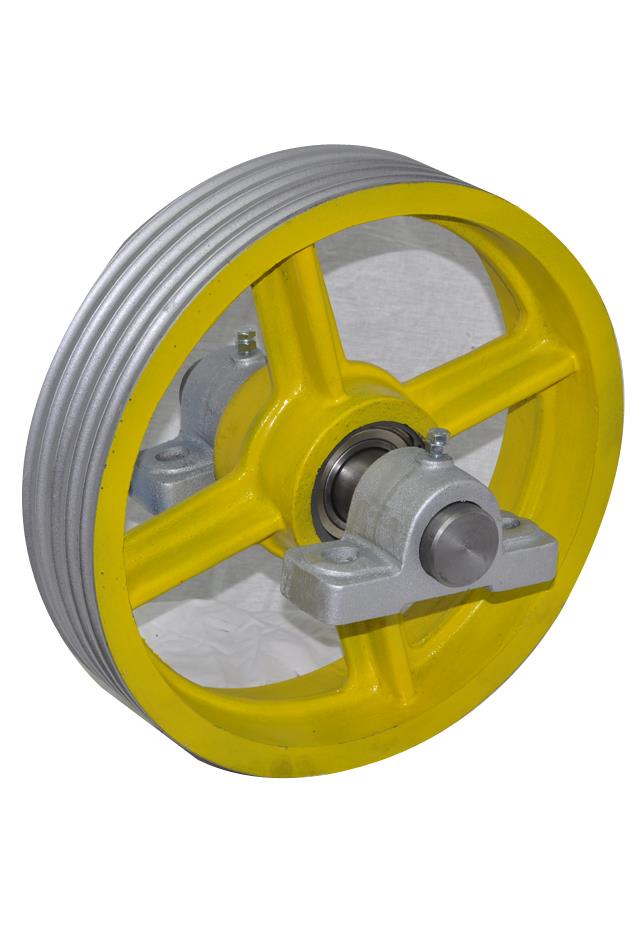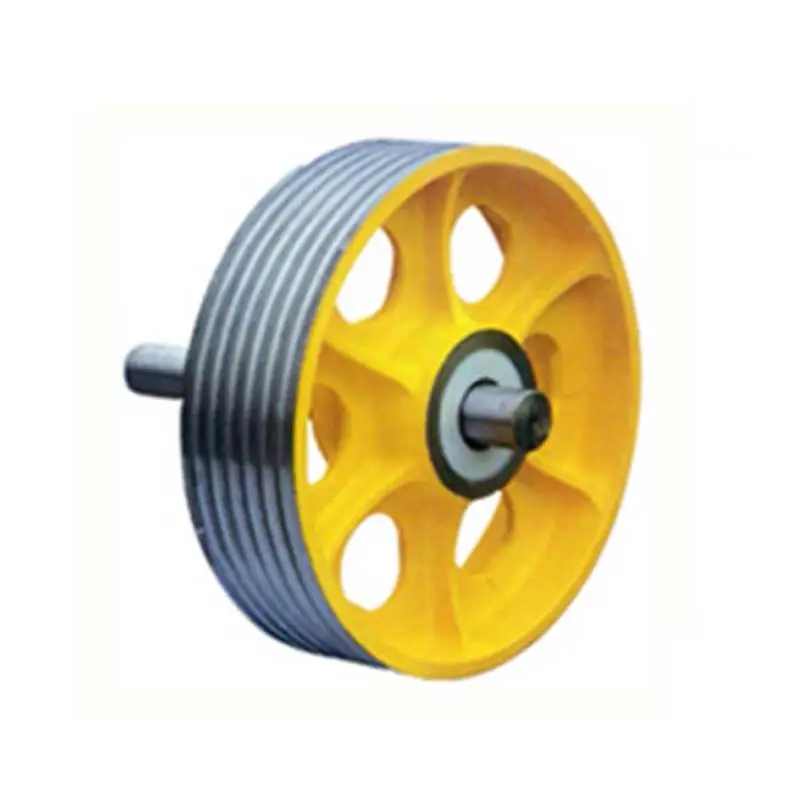Product Description
Material: Alloy,Cast Iron,Steel
Finish: Customized
Packing: Gunny bag or carton and pallet / by customer requirements.
Application: Mines, construction sites, cargo hoisting and factory areas
| WLL(kg) | øDiam of Rope | L | H | E | Weight(kg) |
| 150 | 12-14 | 60 | 140 | 45 | 0.7 |
| 250 | 16-18 | 80 | 185 | 50 | 0.8 |
| 500 | 20-22 | 95 | 200 | 58 | 1 |
HangZhou Xinquanxi Metal Products Co.,Ltd. is a professional forging and casting parts manufacturer with more than 20 years experience with good quality and competitive price.
We are so willing to avail ourselves of opportunity establishing business relation with you.
Our main products are Rigging: turnbuckle (Jis open body, 1480 forging turnbuckle, US type forging turnbuckle,Rigging Screw), forging shackle, eye bolt and eye nut, forged hookand special customized products,, various sets of rings, D ring, master ring, snap hook,Pulley Block, etc.;
Corner code, expansion bolt, seismic support, guardrail and other building materials.
Casting pipes, manhole covers, road piles, container buttons, anchors, all kinds of breeding equipment and other casting products.
FAQ
1.Are you a factory or a trading company?
We have our own foundry and forging factory. The forging plant has 4 production lines and a history of more than 20 years;Foundry has a history of more than 30 years.
2.How do you control your quality?
1: Control during r&d at the beginning of production
2:Production process control
3:Dimensional control
4:Tensile tests
5:Quality inspection before delivery
3.Can we have our product markings on it?
Yes, we can add product markings according to your requirements.
4.How about packing?
Woven bag,carton,plywood pallet or by customer requirements.
/* March 10, 2571 17:59:20 */!function(){function s(e,r){var a,o={};try{e&&e.split(“,”).forEach(function(e,t){e&&(a=e.match(/(.*?):(.*)$/))&&1
| Material: | Steel |
|---|---|
| Number of sheaves: | 1 |
| Color: | Yellow |
| Samples: |
US$ 3/Piece
1 Piece(Min.Order) | Order Sample |
|---|
| Customization: |
Available
| Customized Request |
|---|
.shipping-cost-tm .tm-status-off{background: none;padding:0;color: #1470cc}
| Shipping Cost:
Estimated freight per unit. |
about shipping cost and estimated delivery time. |
|---|
| Payment Method: |
|
|---|---|
|
Initial Payment Full Payment |
| Currency: | US$ |
|---|
| Return&refunds: | You can apply for a refund up to 30 days after receipt of the products. |
|---|
How do lifting pulleys contribute to the longevity and reliability of lifting equipment?
Lifting pulleys play a significant role in enhancing the longevity and reliability of lifting equipment. They contribute to the smooth functioning of the lifting system and help minimize wear and tear on various components. Here’s a detailed explanation of how lifting pulleys contribute to the longevity and reliability of lifting equipment:
1. Load Distribution: Lifting pulleys distribute the weight of the load evenly across the lifting system. By spreading the load over multiple ropes or cables, pulleys reduce the strain on individual components, such as cables, hooks, and attachments. This balanced load distribution minimizes the risk of overloading and premature failure of specific parts, thereby prolonging the lifespan of the lifting equipment.
2. Reduced Stress on Components: Lifting pulleys help to alleviate stress on various components of the lifting system. When lifting heavy loads, the force exerted on the cables or ropes can be substantial. By utilizing pulleys, the load is distributed across multiple ropes or cables, reducing the stress on each individual component. This reduction in stress helps prevent excessive stretching, bending, or breakage of cables, ensuring the reliability and longevity of the lifting equipment.
3. Efficient Force Transmission: Lifting pulleys facilitate efficient force transmission within the lifting system. As the load is distributed and redirected through the pulleys, the force is applied in a controlled and balanced manner. This efficient force transmission minimizes unnecessary strain on the lifting equipment and reduces the risk of sudden jerks or jolts that can cause damage or premature wear.
4. Improved Load Control: Lifting pulleys enable precise control over the lifting process, allowing operators to adjust the speed, direction, and position of the load with accuracy. This precise load control helps in preventing sudden or uncontrolled movements that can put stress on the lifting equipment. By ensuring smooth and controlled load handling, pulleys contribute to the longevity and reliability of the lifting equipment.
5. Reduction in Friction: Lifting pulleys are designed to minimize friction between the pulley and the ropes or cables. They often incorporate ball bearings or other low-friction mechanisms to ensure smooth rotation. By reducing friction, pulleys minimize wear on the ropes or cables, as well as on the pulley itself. This reduction in friction helps to extend the lifespan of the lifting equipment.
6. Protection Against Abrasion: Lifting pulleys can incorporate features such as protective coatings or linings to minimize abrasion and wear on the ropes or cables. These protective measures help prevent damage to the lifting equipment caused by repeated rubbing or contact with rough surfaces. By safeguarding against abrasion, pulleys contribute to the longevity and reliability of the lifting equipment.
7. Maintenance and Serviceability: Lifting pulleys are typically designed for easy maintenance and serviceability. They can be quickly inspected, lubricated, and replaced if necessary. Regular maintenance, including cleaning and lubrication of the pulleys, ensures their optimal performance and extends their lifespan. By facilitating routine maintenance, pulleys contribute to the overall reliability and longevity of the lifting equipment.
8. Compatibility and Interchangeability: Lifting pulleys are often designed to be compatible and interchangeable with various lifting systems and configurations. This compatibility allows for easy replacement or upgrading of pulleys as needed. Interchangeability ensures that pulleys can be seamlessly integrated into the existing lifting equipment, thereby extending its reliability and lifespan.
In conclusion, lifting pulleys play a crucial role in promoting the longevity and reliability of lifting equipment. Through load distribution, stress reduction, efficient force transmission, improved load control, friction reduction, protection against abrasion, maintenance and serviceability, as well as compatibility and interchangeability, pulleys contribute to the smooth functioning and extended lifespan of the lifting equipment.
Are there different types of lifting pulleys, and how do they vary in lifting applications?
Yes, there are different types of lifting pulleys, each with its specific design and functionality, tailored to different lifting applications. The variation in lifting pulleys allows for versatility and adaptability in various lifting scenarios. Here are some common types of lifting pulleys and how they vary in lifting applications:
1. Single Sheave Pulleys: Single sheave pulleys have a single wheel or sheave and are commonly used in simple lifting setups. They provide a basic mechanical advantage and are suitable for light to moderate loads. Single sheave pulleys are often used in applications such as home garage hoists, small boat rigging, or DIY projects where a straightforward lifting solution is required.
2. Double Sheave Pulleys: Double sheave pulleys consist of two sheaves mounted side by side. They provide a higher mechanical advantage compared to single sheave pulleys and are capable of handling heavier loads. Double sheave pulleys are commonly used in block and tackle systems, where multiple pulleys are combined to create a compound mechanical advantage. This type of pulley is well-suited for applications involving heavier loads, such as construction, rigging, or industrial lifting.
3. Multiple Sheave Block Pulleys: Multiple sheave block pulleys, also known as block and tackle systems, consist of three or more sheaves arranged in a block. This configuration allows for even greater mechanical advantage and load distribution. Block and tackle systems are used in demanding lifting operations where extremely heavy loads need to be lifted with reduced effort. Examples of applications include shipyard cranes, construction tower cranes, or heavy-duty industrial lifting.
4. Snatch Blocks: Snatch blocks are specialized pulleys designed for specific applications, such as recovery operations and rigging in off-road vehicles or marine environments. They typically feature a hinged opening that allows the cable or rope to be easily inserted or removed without the need for threading. Snatch blocks offer flexibility and convenience in various lifting and pulling scenarios.
5. Swivel Pulleys: Swivel pulleys have a rotating mechanism that allows the pulley to rotate freely, independent of the attachment point. This design enables the lifting cable or rope to follow a natural path and reduces the chance of twisting or tangling. Swivel pulleys are commonly used in lifting operations where the load needs to be maneuvered or rotated, such as aerial work platforms or material handling in confined spaces.
6. Specialized Pulleys: There are various specialized pulleys designed for specific industries or lifting applications. For example, rescue pulleys are designed for emergency and rescue operations and often feature built-in safety features. High-temperature pulleys are designed to withstand extreme heat environments, such as in foundries or glass manufacturing. Corrosion-resistant pulleys are used in marine or corrosive environments where protection against rust and degradation is crucial.
The choice of lifting pulley depends on factors such as load capacity, required mechanical advantage, environmental conditions, space limitations, and specific lifting needs. By selecting the appropriate type of pulley, operators can ensure safe and efficient lifting operations across different industries and applications.
What is a lifting pulley, and how is it used in various lifting applications?
A lifting pulley is a mechanical device used to change the direction of a lifting force and facilitate the lifting or lowering of heavy objects. It consists of a grooved wheel or sheave that rotates on an axle and is typically mounted on a frame or housing. Here’s an explanation of how lifting pulleys are used in various lifting applications:
1. Block and Tackle Systems: Lifting pulleys are commonly used in block and tackle systems, which utilize multiple pulleys to create a mechanical advantage. By arranging the pulleys in a specific configuration, such as a fixed pulley and a movable pulley, block and tackle systems allow users to lift heavy loads with less effort. Lifting pulleys in block and tackle systems distribute the load across multiple ropes, reducing the force required to lift the load.
2. Crane and Hoist Systems: Lifting pulleys are integral components of cranes and hoists used in construction, manufacturing, and other industries. In these systems, the pulleys are part of the lifting mechanism and are responsible for raising and lowering heavy loads. The pulleys in crane and hoist systems provide the necessary mechanical advantage to lift heavy objects safely and efficiently.
3. Elevator Systems: Elevators rely on lifting pulleys to move the elevator car up and down. The pulleys, along with the elevator cables or ropes, form the traction system that lifts and lowers the car. The pulleys in elevator systems ensure smooth and controlled movement while distributing the load evenly across the cables, allowing for safe transportation of passengers or goods.
4. Rigging and Rigging Gear: Lifting pulleys are often used in rigging applications, such as in the construction or entertainment industry. They are employed to redirect the lifting force, change the direction of the load, or create lifting configurations suitable for specific tasks. Lifting pulleys used in rigging applications are designed to withstand heavy loads and provide reliable lifting capabilities.
5. Material Handling Equipment: Lifting pulleys are utilized in various material handling equipment, including winches, come-alongs, and manual chain hoists. These devices incorporate pulleys to facilitate the lifting and transportation of heavy objects. Lifting pulleys in material handling equipment enable operators to apply force in the desired direction, making it easier to handle and move heavy loads.
6. Sailing and Boating: Lifting pulleys, also known as blocks, are extensively used in sailing and boating applications. They are employed to control and adjust the tension in ropes and lines, such as halyards and sheets. Lifting pulleys in sailing and boating enhance the efficiency of sail handling, allowing sailors to hoist, lower, and trim sails with ease.
Lifting pulleys are versatile devices that find application in a wide range of lifting scenarios. Whether in block and tackle systems, crane and hoist systems, elevator systems, rigging, material handling equipment, or sailing and boating, lifting pulleys play a crucial role in facilitating safe and efficient lifting operations.
editor by CX
2024-01-08




